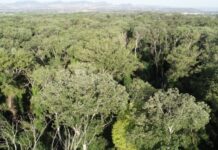
Ageing is a progressive process characterised by a decline in various physiological functions. Globally, populations of different ethnic and economic sectors are ageing faster than before. In fact, for the first time, people over 60 years have surpassed those under five years [1]. In this context, the World Health Organization (WHO) has projected that people over 60 will reach 34% of the total population between 2020 and 2030 [1]. This will greatly impact how societies are organised, as innovative initiatives will be required to improve health and social care systems, transportation, housing, urban planning, and economic security for current and future generations [2].
Although chronological age is the main determinant of ageing, physical and social environmental factors play a crucial role in the opportunities for healthy ageing from early stages of life. Consequently, the health of older people is determined by the combined effects of biological and lifestyle factors influenced by environmental factors [3]. Therefore, while ageing could be considered a public policy achievement, it remains a growing problem for societies that must promote healthy ageing and the health of older people.
Healthy ageing has been established as a health priority for WHO between 2015 and 2030 [4]. Indeed, if health in older people is seen beyond the absence of disease, all older people could achieve healthy ageing. However, how is it possible to age well with the increasing burden of non-communicable diseases and the loss of independence associated with increasing geriatric syndromes?
Physical capacity, as measured by physical markers, is the ability to perform basic and instrumental activities of daily living; in other words, how independent individuals are. In addition to independence, low levels of physical capacity markers (such as low grip strength, low muscle mass and low physical performance) are strong predictors of future health. They have been associated with a higher risk of morbidity and mortality, including premature mortality and cardiovascular and neurodegenerative diseases. In this context, previous studies have evidenced that individuals with lower physical capability, sarcopenia and/or frailty are at increased risk of adverse health outcomes, including: incidence and mortality from osteoporosis, cardiovascular disease, respiratory disease, cancer, COVID-19, dementia [5-10]. Physiologically, the decline in physical function is associated with age. However, previous studies have evidenced that these markers begin to decline after ~35 years [11, 12]. Therefore, considering that this decline occurs progressively, along with the rapid growth in the number of older adults, the study of this process should begin earlier in life and not only during late life [11, 12].
References
[1] WHO. Ageing and Health. 2021 [cited; Available from: https://www.who.int/es/news-room/fact-sheets/detail/ageing-and-health
[2] Rowe JW. Challenges For Middle-Income Elders In An Aging Society. Health Aff (Millwood) 2019;38:101377hlthaff201900095.
[3] Lara J, Sherratt MJ, Rees M. Aging and anti-aging. Maturitas 2016;93:1-3.
[4] WHO. Ageing: Healthy ageing and functional ability. 2020 [cited 2021 21 June]; Available from: https://www.who.int/news-room/q-a-detail/ageing-healthy-ageing-and-functional-ability
[5] Petermann-Rocha F, Ho FK, Welsh P, Mackay D, Brown R, Gill JMR, et al. Physical capability markers used to define sarcopenia and their association with cardiovascular and respiratory outcomes and all-cause mortality: A prospective study from UK Biobank. Maturitas 2020;138:69-75.
[6] Petermann-Rocha F, Hanlon P, Gray SR, Welsh P, Gill JMR, Foster H, et al. Comparison of two different frailty measurements and risk of hospitalisation or death from COVID-19: findings from UK Biobank. BMC Medicine 2020;18:355.
[7] Petermann-Rocha F, Lyall DM, Gray SR, Esteban-Cornejo I, Quinn TJ, Ho FK, et al. Associations between physical frailty and dementia incidence: a prospective study from UK Biobank. The Lancet Healthy Longevity 2020;1:e58-e68.
[8] Petermann-Rocha F, Ferguson LD, Gray SR, Rodríguez-Gómez I, Sattar N, Siebert S, et al. Association of sarcopenia with incident osteoporosis: a prospective study of 168,682 UK biobank participants. J Cachexia Sarcopenia Muscle 2021.
[9] Petermann-Rocha F, Gray SR, Pell JP, Ho FK, Celis-Morales C. The joint association of sarcopenia and frailty with incidence and mortality health outcomes: A prospective study. Clinical Nutrition 2021;40:2427-2434.
[10] Petermann-Rocha F, Pell JP, Celis-Morales C, Ho FK. Frailty, sarcopenia, cachexia and malnutrition as comorbid conditions and their associations with mortality: a prospective study from UK Biobank. Journal of Public Health 2021.
[11] Garber CE, Greaney ML, Riebe D, Nigg CR, Burbank PA, Clark PG. Physical and mental health-related correlates of physical function in community dwelling older adults: a cross sectional study. BMC Geriatrics 2010;10:6.
[12] Tomey KM, Sowers MR. Assessment of physical functioning: a conceptual model encompassing environmental factors and individual compensation strategies. Phys Ther 2009;89:705-714.





































